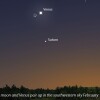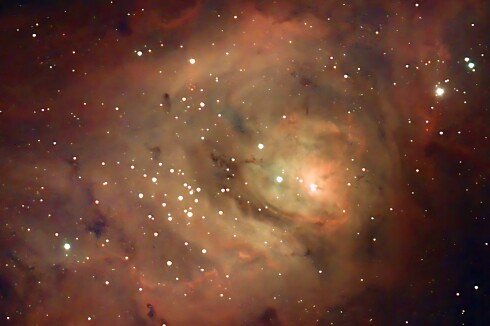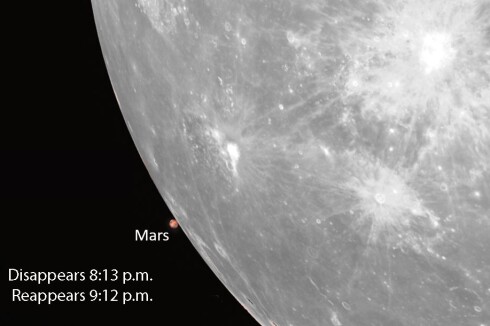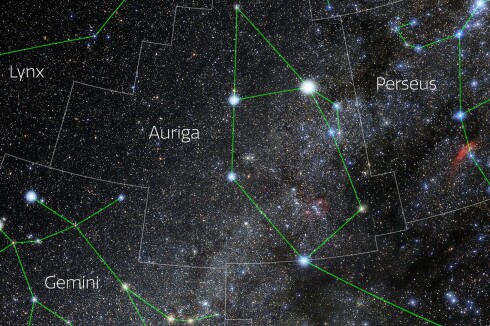Busy, busy, busy. Lots of things are happening in the night sky during the coldest month of the year. Highlights include passes by two different space stations, a pair of occultations, a meteor shower and Mars’ close approach to Earth.
The four brightest planets are still afoot. Venus and Saturn dot the southwestern sky at dusk, while Jupiter and Mars join the bright winter stars in the east. Keep an eye on Venus. It moves faster than Saturn and will overtake the ringed planet on Jan. 17-19, making for a wonderful naked-eye conjunction.
ADVERTISEMENT
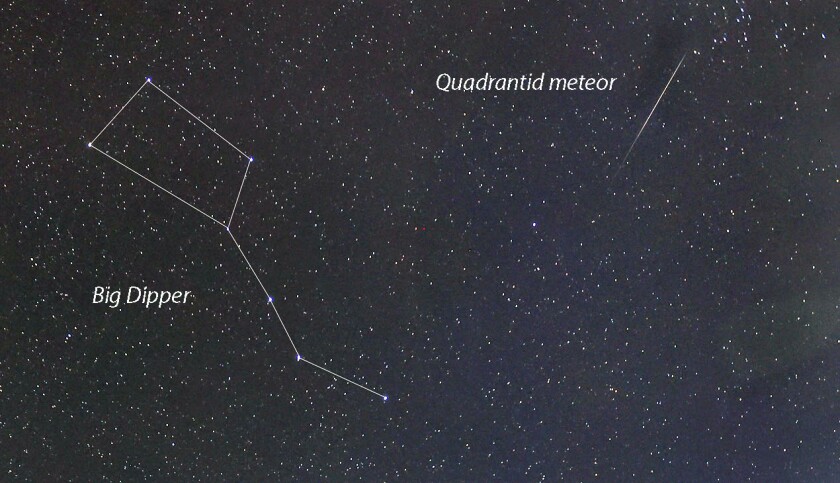
Weather permitting, we’ll see the annual Quadrantid meteor shower on the morning of Jan. 3 with no moon to mar the view. The shower’s streaming point lies in the obsolete constellation of the Mural Quadrant (Quadrans Muralis), a faint group of stars below the handle of the Big Dipper that was once recognized as a constellation before it fell into disuse. Up to 25 meteors per hour are expected this year for U.S. skywatchers.
The moon will cover and uncover several bright members of the Pleiades star cluster on the evening of January 9th. Times vary by location, but for the Duluth area, the moon will hide the star Merope starting at about 6:18 p.m. local time, Alcyone (7:01 p.m.), Atlas (7:45 p.m.) and Pleione (7:48 p.m.) as it moves from west to east across the cluster. Astronomers call these celestial peekaboos occultations.
On Jan. 13 the full moon occults Mars, which coincidentally will shine at its brightest for the year. The event will be visible across the entire country. Early on, you can watch the moon slowly approach the planet without optical aid. But you’ll need binoculars or a small telescope to watch Mars disappear at the moon’s leading edge (and later reappear on the opposite side) because of the bright glare.
For a list of disappearance and reappearance times for various cities, go to lunar-occultations.com/iota/planets/0114mars.htm . To convert the times shown to your time zone, subtract 5 hours for EST; 6 hours for CST; 7 hours for MST and 8 hours for PST. For example, from Duluth, Mars will disappear behind the moon at 2:12 Universal Time (Jan. 14). Subtract 6 hours to get 8:12 p.m. CST (Jan. 13). Mars pops back into view a bit more than an hour later at 3:11 UT or 9:11 p.m. CST.
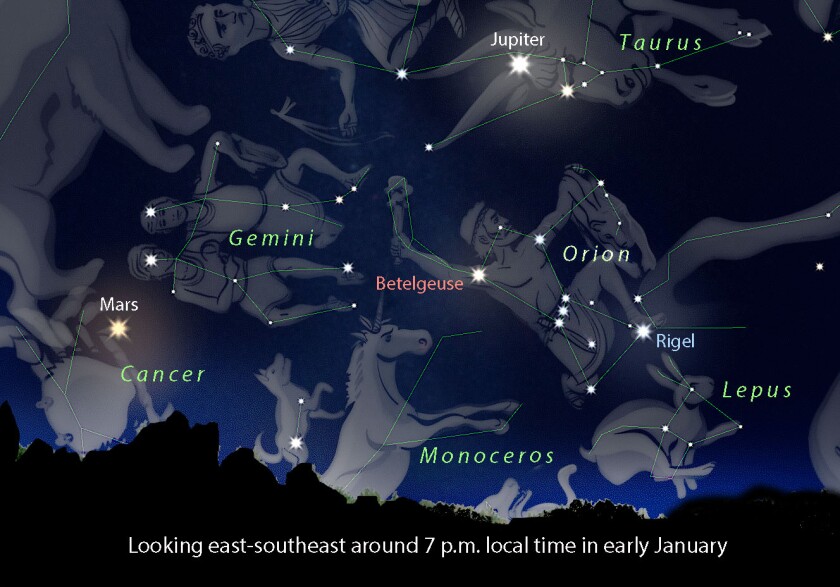
Our featured constellation this month is none other than Orion. His three-starred belt is recognized the world over. Although the stars appear to be related, each lies at a different distance. Alnitak, located at the left side, is 800 light-years away; Alnilam, in the middle, is 1,300 light-years from us, and Mintaka, on the right side, beams from 900 light-years away. All three just happen to lie along nearly the same line of sight, the reason they make such an eye-catching pattern.
The trio sits near the center of a big rectangle outlined by four stars that include the bright and well-known luminaries Betelgeuse and Rigel. Orion is an ancient constellation that originated with the Sumerians in Mesopotamia more than 5,000 years ago. He represents the legendary hero Gilgamesh who fought the Bull of Heaven, which we know today as Taurus.
To the ancient Greeks he was a great hunter, with a club of solid brass and accompanied by his dogs Canis Major and Canis Minor. When Orion bragged about his hunting skills, a scorpion (Scorpius) was sent to fatally sting him. Both the hunter and his nemesis were placed in the sky opposite one another. To this day, as Scorpius rises in the east, Orion ducks for cover under the western horizon.
ADVERTISEMENT
Download the free Stellarium Mobile app for Android and iPhone to help you find and identify the current planets and constellations. Do a Google search, then install the app, set it in night mode (red screen) and point your phone skyward. For a free January sky map and calendar go to www.skymaps.com/downloads.html
Events (a.m. indicates the event happens in the morning sky):
Jan. 1 – Spy a delicate lunar crescent low in the southwestern sky 40 minutes after sunset. Look “2 fists” below and right of Venus.
Jan. 1-11 – China’s Tiangong space station makes passes across the southern sky during the early evening hours. Like the International Space Station, it orbits the Earth with a crew of astronauts. But since it’s smaller, it looks fainter. For a complete list of pass times for your location, log in to Heavens-Above.com and then click the blue Tiangong link.
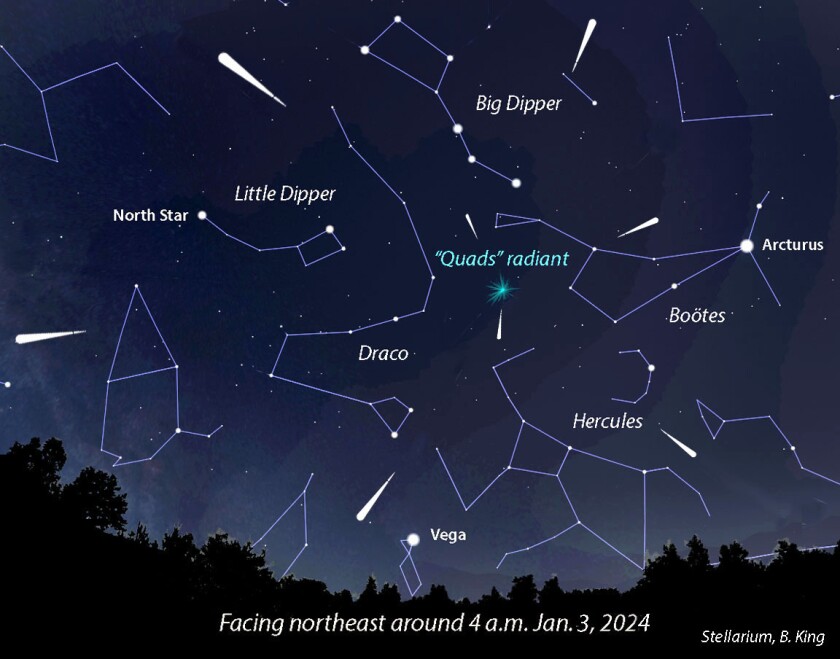
Jan. 3 (a.m.) – Peak of the annual Quadrantid meteor shower. Watch between 4-6 a.m. local time. Meteors will stream from the northeastern sky below the Dipper’s handle.
Jan. 3 – Crescent moon and Venus are paired up 1-2 hours after sunset in the southwestern sky.
Jan. 4 – Thick lunar crescent shines just a few degrees to the left (east) and above Saturn in the southwestern sky.
ADVERTISEMENT
Jan. 6 – First quarter moon
Jan. 9 – Waxing gibbous moon occults members of the Pleiades star cluster early this evening. Use 7-10x binoculars, or better, a small telescope to see through the moon’s glare.
Jan. 10 – Moon near the bright planet Jupiter tonight
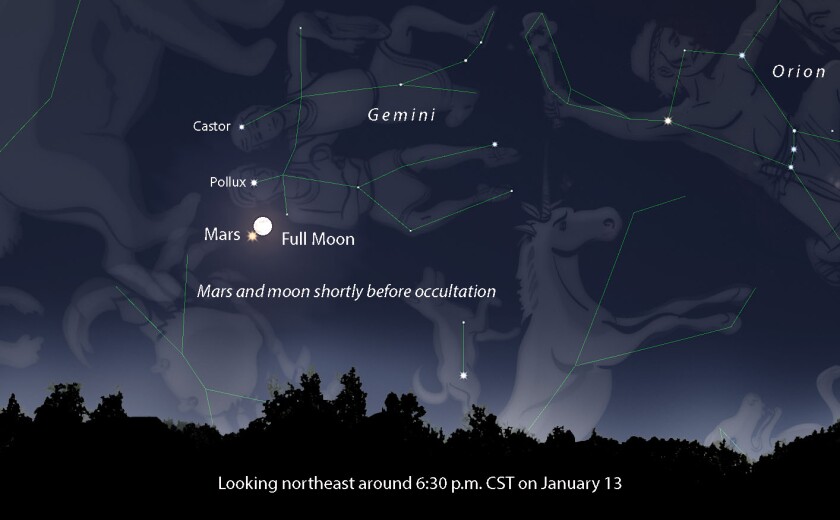
Jan. 13 – Full Wolf Moon occults the planet Mars this evening! Use binoculars or a small telescope to see the moment Mars disappears along the moon’s left (eastern) edge and then pops back into view at the opposite limb.
Jan. 13-31 – The International Space Station (ISS) will make nightly passes from west to east across the evening sky. For a complete list of times for your location, log in to Heavens-Above.com and click the blue ISS link. The ISS is the largest and brightest satellite, comparable to Jupiter and Venus in brilliance.
Jan. 15 – Mars at opposition. Both Earth and Mars are lined up on the same side of the sun and make their closest approach to each other in nearly two years. Our planet sits in the middle between Mars and the sun, so from our perspective the two bodies lie at opposite ends of the sky — they’re at opposition. When the sun sets in the west, Mars rises in the east and stays out the entire night, shining nearly as bright as Sirius, the brightest nighttime star. Mars won’t be this radiant again until April 2031.
Jan. 17 – Mars makes a nearly perfect straight line with the stars Pollux and Castor in Gemini tonight.
ADVERTISEMENT
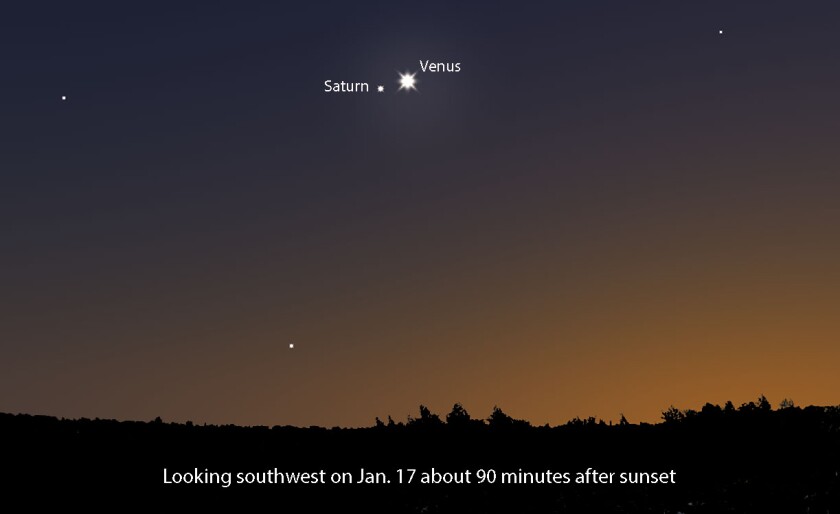
Jan. 17-19 – Twin jewels Venus and Saturn are in conjunction and snuggle together in the southwestern sky from dusk through early nightfall. Venus is the brighter and shines to the upper right of Saturn.
Jan. 21 (a.m.) – Last quarter moon. Shines in the southern sky to the lower left of Virgo’s brightest star, Spica.
Jan. 29 – New Moon
Jan. 31 – Thin lunar crescent shines below and right of Saturn at dusk.



